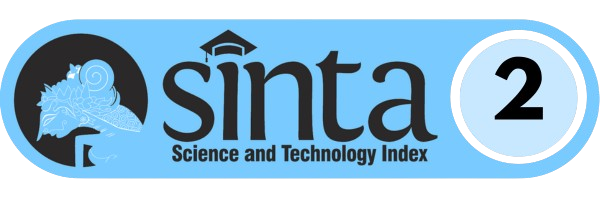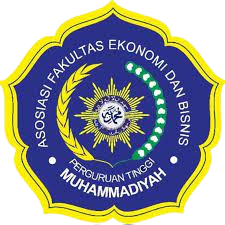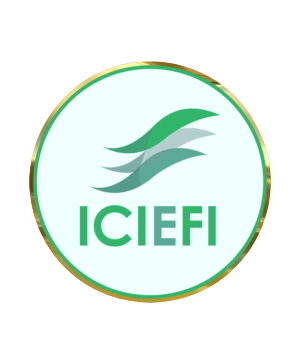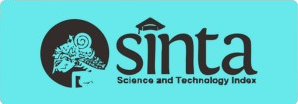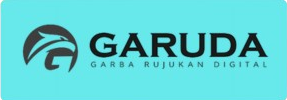Halal Awareness, Brand Image, and Viral Marketing: Three Key Factors Influencing Purchasing Decisions for Halal Skin Care and Cosmetics Products in Pontianak
DOI:
https://doi.org/10.24269/ekuilibrium.v19i1.2024.pp42-58Abstract
This research aims to determine the influence of halal awareness, brand image, and viral marketing on the purchasing decisions of halal skincare and cosmetic products (a study on Generation Z in  the environment of Muhammadiyah University Pontianak). The research is conducted within the Muhammadiyah University Pontianak environment. The population of this study includes all students of Muhammadiyah University Pontianak born between the years 1995-2010. The sample for this research consists of 200 students from Muhammadiyah University Pontianak. The data collection technique used is a questionnaire employing a Likert scale. The data analysis technique in this research uses Structural Equation Modeling (SEM) PLS with the SmartPLS Version 3.2.9 program. The results of this research show that halal awareness and brand image do not have a significant influence on purchasing decisions, whereas viral marketing has a positive and significant impact on purchasing decisions for halal skincare and cosmetic products among Generation Z in the Muhammadiyah University Pontianak environment. This study contributes theoretically by exploring the influence of halal product awareness, brand image, and viral marketing variables on purchasing decisions among Generation Z in a university setting. The findings enhance insights into academic literature related to halal skincare and cosmetics, even though halal product awareness and brand image are not significant. Practically, these findings provide guidance for industry practitioners to enhance marketing strategies, especially in the context of viral marketing that has proven to have a positive impact on purchasing decisions. The novelty of the research lies in its focus on Generation Z and the use of the Structural Equation Modeling (SEM) PLS analysis method, contributing to theoretical, practical, and methodological understanding in the context of marketing halal skincare and cosmetic products among Generation Z in a university environment.
References
Amarul, A. . S. S. . & K. D. (2019). Understanding the awareness of the importance of halal labels to business actors based on range of long business variations. Business and Management Research, 8(1), 17–21.
Ambali, A. R. . & B. A. N. (2014). People’s Awareness on Halal Foods and Products: Potential Issues for Policmakers. Procedia-Social and Behavioral Sciences, 12(1), 3–25.
Arnould, E. J. T. C. J. (2005). Consumer Culture Theory (CCT): Twenty Years of Research. Journal Of Consumer Research, 31, 868–882.
Asriani, D. (2017). Pengaruh Viral Marketing Terhadap Keputusan Pembelian. 369–373.
Ayuningtyas, E. D. . (2016). Pengaruh Pemilihan Produk Susu Kemasan Karton Terhadap Pengambilan Keputusan Pembelian. Jurnal Ekuilibrium, 14(1), 29–42.
Aziz, Y. A. . & C. N. V. (2013). The Role Of Halal Awareness, Halal Certification, And Marketing Components In Determining Halal Purchase Intention Among Non-Muslims In Malaysia: A Structural Equation Modeling Approach. Journal of International Food and Agribusiness Marketing, 25(1), 1–23.
Bashir, A. M. (2019). Effect Of Halal Awareness, Halal Logo And Attitude On Foreign Consumers’ Purchase Intention. British Food Journal, 121(9), 1998–2015.
BenÃtez-Márquez, M. D. . S.-T. E. M. . B.-G. G. . & N. E. S. (2021). Generation Z Within the Workforce and in the Workplace: A Bibliometric Analysis. Frontiers in Psychology, 12, 1–16.
Das, G. G. K. K. D. B. (2013). Impact of Store Personality Antecedents on Store Personality Dimensions: An Empirical Study of Department Retail Brands. Global Business Review, 14(3), 471–486.
Dwivedi, Y. K. . I. E. . H. D. L. . C. J. . F. R. . J. J. . J. V. . K. H. . K. H. . K. A. S. . K. V. . R. M. M. . R. R. . R. P. A. . R. J. . S. J. . T. G. A. . & W. Y. (2020). Setting The Future Of Digital And Social Media Marketing Research: Perspectives And Research Propositions. International Journal of Information Management, 1–37.
Engel, J. F. . R. D. B. and P. W. M. (1995). Consumer Behaviour. The USA: The Dryden Press.
Ferrinadewi, E. (2005). Atribut Produk yang Dipertimbangkan dalam Pembelian Kosmetik dan Pengaruhnya pada Kepuasan Konsumen di Surabaya. Jurnal Manajemen Dan Kewirausahaan, 7(2), 127–139.
Geertz, C. (1973). The Interpretation of Cultures. New York: Basic Books.
Grayson, K. and R. M. (2004). Consumer Perceptions of Iconicity and Indexicality and Their Influence on Assessments of Authentic Market Offerings. Journal of Consumer Research, 296–313.
Gumelar, B. (2016). Pengaruh Brand Image Dan Celebrity Endorser Terhadap Keputusan Pembelian Kosmetik Wardah. Universitas Negeri Yogyakarta, Yogyakarta.
Hair, J. F. . H. G. T. M. . R. C. M. . & S. M. (2022). A primer on partial least squares structural equation modeling (PLS-SEM) (2nd ed.). Thousand Oaks, CA: Sage.
Hamdani, M. Y. . & M. M. K. (2018). Pengaruh Viral Marketing Terhadap Kepercayaan Konsumen Serta Dampaknya Terhadap Keputusan Pembelian. Jurna Administrasi Bisnis, 60(1), 163–171.
Hartono, J. M. dan A. W. (2014). Konsep Aplikasi PLS (Partial Least Square) untuk Penelitian Empiris. Edisi Pertama (Cetakan Kedua). Yogyakarta.: BPFE.
Holt, D. B. and T. C. J. (2004). Man-of-Action Heroes: The Pursuit of Heroic Masculinity in Everyday Consumption. Journal of Consumer Research, 31, 425–440.
Howard, J. and J. S. (1969). The Theory of Buyer Behavior. New York: John Wiley.
Istiyanto, B. . & N. L. (2017). Analisis pengaruh Brand Image, Harga, dan Kualitas Produk terhadap Keputusan Pembelian mobil (studi kasus mobil LCGC di Surakarta). Eksis: Jurnal Riset Ekonomi Dan Bisnis, 12(1).
Jannah, S. M. . & A.-B. H. (2021). Halal Awareness And Halal Traceability: Muslim Consumers’and Entrepreneurs’ Perspectives. Journal of Islamic Monetary Economics and Finance, 7(2), 285–316.
Kaplan, A. M. . H. M. (2011). Two Hearts In Three-Quarter Time: How To Waltz The Social Media/Viral Marketing Dance. Business Horizons, 54, 253–263.
Khan, S. . H. A. . K. M. I. . A. M. H. . & A.-A. A. (2018). Implementing Traceability Systems In Specific Supply Chain Management (SCM) Through Critical Success Factors (Csfs). Sustainability (Switzerland), 10(1), 204–229.
Kotler, P. A. G. (2018). Prinsip-Prinsip Pemasaran. Jilid 1 (Kedua Belas). Jakarta: Erlangga.
Kotler, P. and K. K. L. (2018). Manajemen Pemasaran (Ketiga Belas). Jakarta: Erlangga.
Lahonusa, A. I. . M. Y. (2021). Analisis Pengaruh Brand Image, Brand Trust Dan Viral Marketing Terhadap Keputusan Pembelian Produk Sepatu “Converse†Pada Mahasiswa Fakultas Ekonomi Dan Bisnis Universitas Sam Ratulangi Manado. Jurnal EMBA, 9(1), 511–520.
Latan, H. dan G. I. (2017). Partial Least Square, Konsep Aplikasi Path Modelling XLSTAT. Semarang: Badan Penerbit Universitas Diponegoro.
Liu, H. H. . & W. Y. N. (2012). Interrelationships Between Viral Marketing And Purchase Intention Via Customer-Based Brand Equity. Journal Of Business And Management Sciences, 7(2), 72–83.
Mustikasari, A. . & W. S. (2019). The Influence of Viral Marketing toward Brand Awareness and Purchase Decision. 1st International Conference on Economics, Business, Entrepreneurship, and Finance (ICEBEF 2018), 65, 647–750.
Nadya, N. (2016). Peran Digital Marketing Dalam Eksistensi Bisnis Kuliner Seblak Jeletet Murni. Jurnal Riset Manajemen Dan Bisnis (JRMB) Fakultas Ekonomi UNIAT, 1(2), 133–144.
Nicosia and Francesco, M. (1966). Consumer Decision Process. Englewood Cliffs, N.J.: Prentice Hall.
Parengkuan, V. . T. A. . & W. R. (2014). Analisis pengaruh brand image dan celebrity endorsment terhadap keputusan pembelian produk shampo Head and Shoulders di 24 mart Manado. Jurnal EMBA: Jurnal Riset Ekonomi, Manajemen, Bisnis Dan Akuntansi, 2(3).
Rahayu, T. S. M. H. R. (2023). PENGARUH LABEL HALAL, PROMOSI DI MEDIA SOSIAL, DAN WORD OF MOUTH (WOM) TERHADAP KEPUTUSAN PEMBELIAN MS GLOW DI CILACAP. Derivatif : Jurnal Manajemen, 17(1), 64–76.
Rahim, N. F. . S. Z. S. S. (2013). Awareness and Perception of Muslim Consumers on NonFood Halal Product. Journal of Social and Development Sciences, 4(10), 478–487.
Sandala, D. . M. J. D. D. . T. W. J. F. A. (2019). Pengaruh Viral Marketing, Food Quality Dan Brand Trust Terhadap Keputusan Pembelian Produk Mom Milk Manado. Jurnal EMBA, 7(3), 2721–2730.
Sandi, A. S. P. . M. . R. D. (2011). Persepsi Label Halal terhadap Keputusan Pembelian Konsumen pada Produk Minuman Berenergi. Jurnal Manajemen Bisnis , 1(2), 135–143.
Sandi Sumar; Christianingrum, C. K. T. (2020). Pengaruh Viral Marketingdan Kepercayaan Konsumen Terhadap Keputusan Pembelian Online Melalui Media Sosial Instagram Pada Mahasiswa Fakultas Ekonomi Universitas Bangka Belitung Angkatan 2016-2018. Holistic Journal of Management Research, 1(1), 17–26.
Santoso, A. . & H. (2016). Pengaruh Kualitas Produk dan Ekuitas Merek Terhadap Keputusan Pembelian. Jurnal Ekuilibrium, 11(1), 43–55.
Sarstedt, M. . C. M. R. dan J. F. H. (2017). Partial Least Squares Structural Equation Modeling. Homburg: Springer International Publishing.
Saura, J. R. (2021). Using Data Sciences In Digital Marketing: Framework, Methods, And Performance Metrics. Journal of Innovation and Knowledge, 6(2), 92–102.
Schiffman and Kanuk. (2007). Perilaku Konsumen (Edisi Kedua). Jakarta: PT. Indeks Gramedia.
Sekaran, U. . dan R. J. B. (2013). Research Methods For Bussiness: A. Skill Builing Approach. New York: Wiley.
Silsilia.O. Umboh, . A. Tumbel., D.Soepeno. (2015). Analisis Kualitas Produk, Brand Image Dan Life Style Terhadap Keputusan Pembelian Pakaian Wanita Di Mississippi Manado Town Square. Jurnal EMBA, 3(1), 1096–1105.
Simamora, B. (2014). Remarketing for Business Recovery, Sebuah Pendekatan Riset. Jakarta: PT. Gramedia Pustaka Utama.
Singh, A. P. . & D. J. (2016). Understanding The Generation Z: The Future Workforce. South-Asian Journal of Multidisciplinary Studies, 3(3), 1–5.
Solomon, M. R. . G. B. S. A. and M. K. H. (2006). Consumer Behaviour: A European Perspective. England: Pearson Education Limited.
Susanto, A. dan H. W. (2004). Power Branding. Jakarta: Quantum Bisnis dan Manajemen.
Thomson, C. J. P. H. R. L. W. B. (1994). The Spoken and the Unspoken: A Hermeneutic Approach to Understanding the Cultural Viewpoints That Underlie Consumers’ Expressed Meanings. Journal of Consumer Research, 21, 432–452.
Wang, W. . & S. W. N. (2018). Modeling And Maximizing Influence Diffusion In Social Networks For Viral Marketing. Applied Network Science, 3(1), 1–26.
Wiranaga. (2009). Viral Marketing: Definisi, Kriteria Pendukung, Kelebihan dan Kelemahan Viral Marketing.
Wolfinbarger, M. and G. M. C. (2003). eTailQ: Dimensionalizing, Measuring and Predicting Etail Quality. 79, 183–198.
Downloads
Published
How to Cite
Issue
Section
License
Retained Rights/Terms and Conditions of Publication
1. As an author you (or your employer or institution) may do the following:
- make copies (print or electronic) of the article for your own personal use, including for your own classroom teaching use;
- make copies and distribute such copies (including through e-mail) of the article to research colleagues, for the personal use by such colleagues (but not commercially or systematically, e.g. via an e-mail list or list server);
- present the article at a meeting or conference and to distribute copies of the article to the delegates attending such meeting;
- for your employer, if the article is a ‘work for hire’, made within the scope of your employment, your employer may use all or part of the information in the article for other intra-company use (e.g. training);
- retain patent and trademark rights and rights to any process, procedure, or article of manufacture described in the article;
- include the article in full or in part in a thesis or dissertation (provided that this is not to be published commercially);
- use the article or any part thereof in a printed compilation of your works, such as collected writings or lecture notes (subsequent to publication of the article in the journal); and prepare other derivative works, to extend the article into book-length form, or to otherwise re-use portions or excerpts in other works, with full acknowledgement of its original publication in the journal;
- may reproduce or authorize others to reproduce the article, material extracted from the article, or derivative works for the author's personal use or for company use, provided that the source and the copyright notice are indicated, the copies are not used in any way that implies RCEPM-LIPI endorsement of a product or service of any employer, and the copies themselves are not offered for sale.
All copies, print or electronic, or other use of the paper or article must include the appropriate bibliographic citation for the article's publication in the journal.
2. Requests from third parties
Although authors are permitted to re-use all or portions of the article in other works, this does not include granting third-party requests for reprinting, republishing, or other types of re-use. Requests for all uses not included above, including the authorization of third parties to reproduce or otherwise use all or part of the article.
3. Author Online Use
- Personal Servers. Authors and/or their employers shall have the right to post the accepted version of articles pre-print version of the article, or revised personal version of the final text of the article (to reflect changes made in the peer review and editing process) on their own personal servers or the servers of their institutions or employers without permission from Universitas Muhamamdiyah Ponorogo, provided that the posted version includes a prominently displayed Universitas Muhamamdiyah Ponorogo copyright notice and, when published, a full citation to the original publication, including a link to the article abstract in the journal homepage. Authors shall not post the final, published versions of their papers;
- Classroom or Internal Training Use. An author is expressly permitted to post any portion of the accepted version of his/her own articles on the author's personal web site or the servers of the author's institution or company in connection with the author's teaching, training, or work responsibilities, provided that the appropriate copyright, credit, and reuse notices appear prominently with the posted material. Examples of permitted uses are lecture materials, course packs, e-reserves, conference presentations, or in-house training courses;
- Electronic Preprints. Before submitting an article to an Ekuilibrium: Jurnal Ilmiah Bidang Ilmu Ekonomi, authors frequently post their manuscripts to their own web site, their employer's site, or to another server that invites constructive comment from colleagues. Upon submission of an article to Ekuilibrium: Jurnal Ilmiah Bidang Ilmu Ekonomi, an author is required to transfer copyright in the article to Economy Faculty Universitas Muhammadiyah Ponorogo, and the author must update any previously posted version of the article with a prominently displayed Economy Faculty Universitas Muhammadiyah Ponorogo copyright notice. Upon publication of an article by the Universitas Muhammadiyah Ponorogo, the author must replace any previously posted electronic versions of the article with either (1) the full citation to the work with a Digital Object Identifier (DOI) or link to the article abstract in Ekuilibrium: Jurnal Ilmiah Bidang Ilmu Ekonomi journal homepage, or (2) the accepted version only (not the final, published version), including the Economy Faculty Universitas Muhammadiyah Ponorogo copyright notice and full citation, with a link to the final, published article in journal homepage.
4. Articles in Press (AiP) service
Economy Faculty Universitas Muhammadiyah Ponorogo may choose to publish an abstract or portions of the paper before we publish it in the journal. Please contact our Production department immediately if you do not want us to make any such prior publication for any reason, including disclosure of a patentable invention.
5. Author/Employer Rights
If you are employed and prepared the article on a subject within the scope of your employment, the copyright in the article belongs to your employer as a work-for-hire. In that case, Economy Faculty Universitas Muhammadiyah Ponorogo assumes that when you sign this Form, you are authorized to do so by your employer and that your employer has consented to the transfer of copyright, to the representation and warranty of publication rights, and to all other terms and conditions of this Form. If such authorization and consent has not been given to you, an authorized representative of your employer should sign this Form as the Author.
6. RCEPM-LIPI Copyright Ownership
It is the formal policy of Economy Faculty Universitas Muhammadiyah Ponorogo to own the copyrights to all copyrightable material in its technical publications and to the individual contributions contained therein, in order to protect the interests of the Economy Faculty Universitas Muhammadiyah Ponorogo, its authors and their employers, and, at the same time, to facilitate the appropriate re-use of this material by others. Economy Faculty Universitas Muhammadiyah Ponorogo distributes its technical publications throughout the world and does so by various means such as hard copy, microfiche, microfilm, and electronic media. It also abstracts and may translate its publications, and articles contained therein, for inclusion in various compendiums, collective works, databases and similar publication.
7. Licensing Terms
Ekuilibrium is licensed under a Creative Commons Attribution-ShareAlike 4.0 International License.
Permissions beyond the scope of this license may be available at https://journal.umpo.ac.id/


